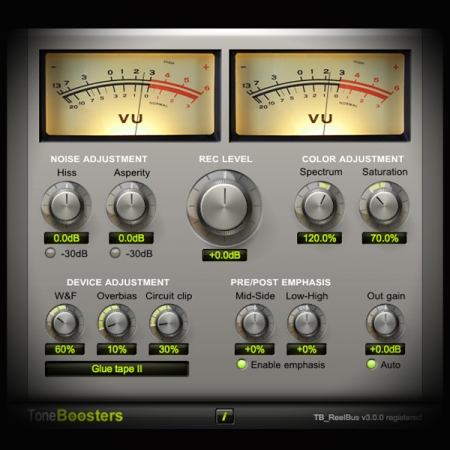Tape Saturation - what is it and how do you use it
What is tape saturation, how does it work and when and how to use it.
Dynamic Processors
Purchase to view this tutorial
By purchasing this tutorial, you'll get immediate access - your purchase helps create new and exciting content and this site survive!
£3.00Add to basket
Tape Saturation – what is it and how do you use it video tutorial explains how the mechanics of tape works and how to use it to saturate sounds and mixes.
though tape saturation has been used for years it has now really come into its own as an effect as so many people want the warmth of analogue in their digital recordings. Basically, the digital age has made this form of distortion even more attractive and sought after and many manufacturers now provide tape saturation plug-ins for producers to use both in mixing and sound design projects.
Tape Saturation – how it works
When driven hard tape responds with gentle distortion, and magnetic tape has frequency-dependent saturation. To understand what happens when driving into analogue tape it helps to understand how tape behaves. Tape recording is another non-linear process as there are so many factors governing the process and result; record and playback heads, tape speed, tape width, tape qualities, phase and high-frequency bias and so on. In other words, the process cannot be linear with so many factors that contribute to both the process and result and because of these; varying results are obtained even though all the necessary record and playback criteria are met.
This, although sounding negative, can actually work in our favour and it is this lack of linear response and inclusion of subtle inaccuracies that lends itself to the desired process.
Tape has the general characteristics of low-frequency distortion (harmonic) and irregular phase responses and if the signal is driven into the magnetic tape then the dynamic range is compromised and the magnetic saturation effect affects the high-frequency content. The limit of analogue tape is saturation. Because tape is magnetic the more signal that is driven into the system the more magnetization of the tape’s magnetic content. Driving beyond this limit means that the magnetic content, or magnetic particles, are exhausted and therefore the reproduction of the driven signal starts to exhibit the qualities stated above. When magnetic particles start to run out saturation compression takes over as there aren’t enough magnetic particles left to store a magnetic field. When the magnetic field in tape has not reached the minimum threshold to be effective it is called hysteresis. Hysteresis can be overcome by using Bias. Bias is the introduction of a high frequency, high amplitude sine wave that is mixed in with the input signal prior to reaching the recording head. This then excites the magnetic particles to produce a stronger magnetic field. If the magnetic field is too strong then not enough magnetic particles are active in capturing the driven input signal and this results in saturation. By altering the bias and hysteresis of tape we can affect different playback and processing qualities and thus affect the saturation qualities.
Tape speed is another area that is critical in how sound is processed through the record and playback heads. Controlling tape speed is a huge factor at the playback stage as any variance will cause specific effects like wow and flutter. Wow is a variation in pitch (caused by the playback process) over a very short duration and rarely desirable but flutter, which is also a variation in pitch but over a much shorter timeline, can be desirable. The flutter causes frequency modulation which results in sidebands (if you modulate the frequency of one signal with another the result will be a sum and difference of sidebands) which are added to the original signal and these will be governed by the flutter rate. The flutter effect is perceived as a thickness of the sound and therefore can be very desirable.
Without a doubt one of the oldest and most potent of all processes – Tape Saturation.
In the Tape Saturation – what is it and how do you use it video I explain every feature available on common tape saturators and how to use them to create new sonic textures. I make sure to ground you in some theory as it is needed to understand the process but I make sure to keep it light and fun. I use a keyboard line and run it through two tape saturator plugins. I explain how tape saturation works and how to use tape saturation plugins in music production.
Plugins used in this video:
Topics covered in this video are:
- What is Saturation
- What is Tape
- How to use Tape
- Saturation Types
- Hysteresis
- Headroom
- Excitation
- Magnetic Threshold
- Speed and Noise
- Filtering
If this tutorial was of help maybe these will also be of benefit:
Valves/Tubes – what are they and how do they work
Harmonic Distortion – Odd and Even Harmonics
Layering Drum Sounds using Multiple Layers
EDM Kick Drum Processing using Valves/Tubes
Mix Bus Compressor Topologies – which compressor to use on the master bus
Studio and Multi Effects Masterclass

